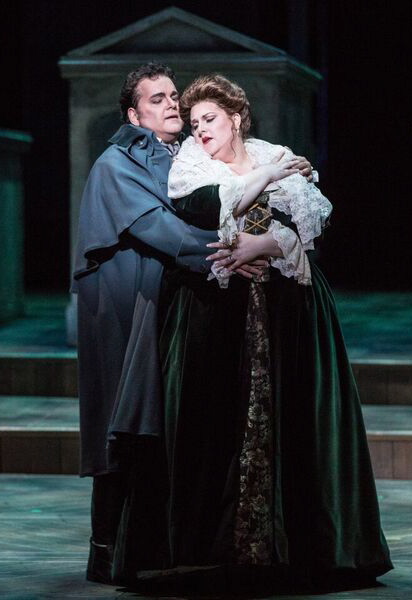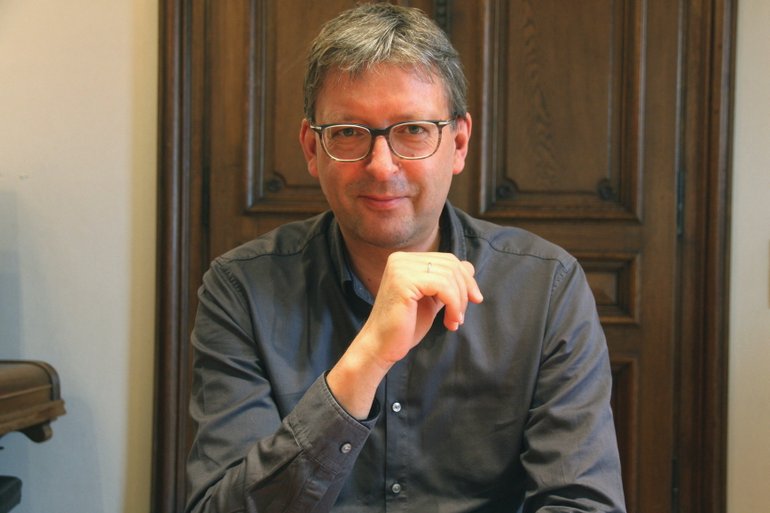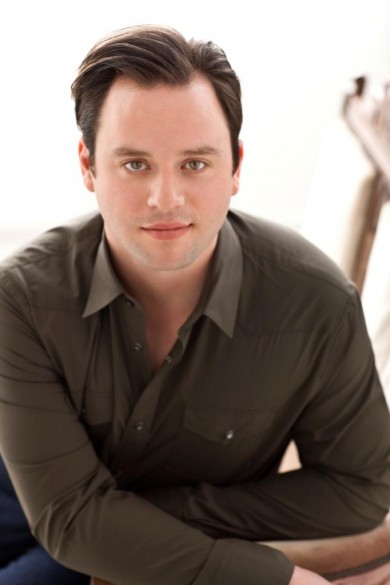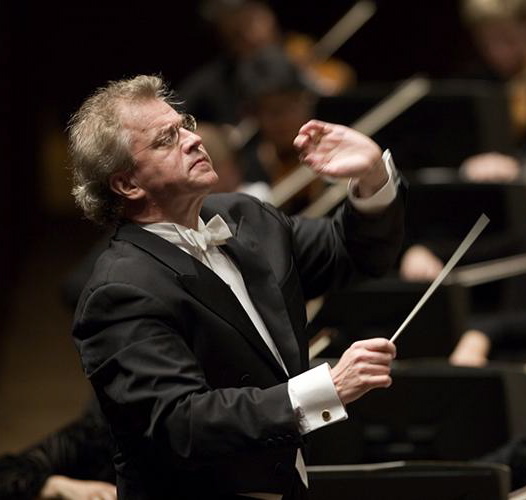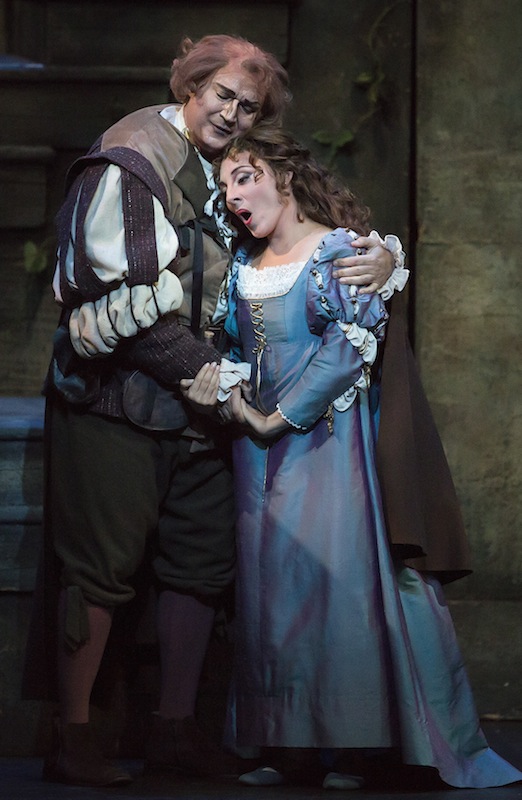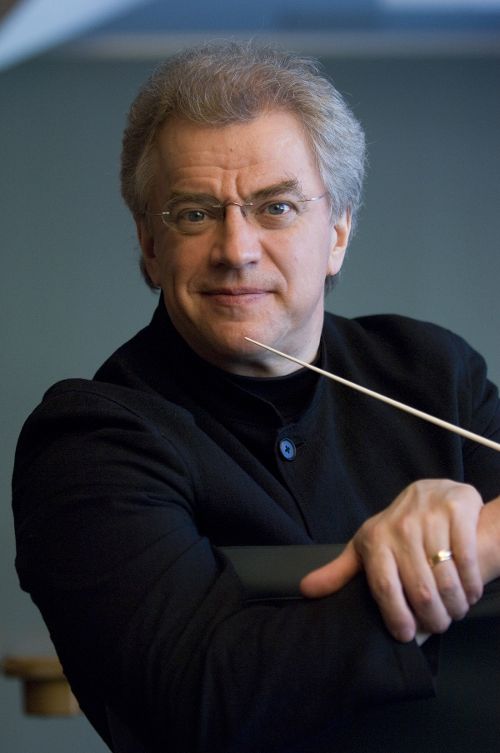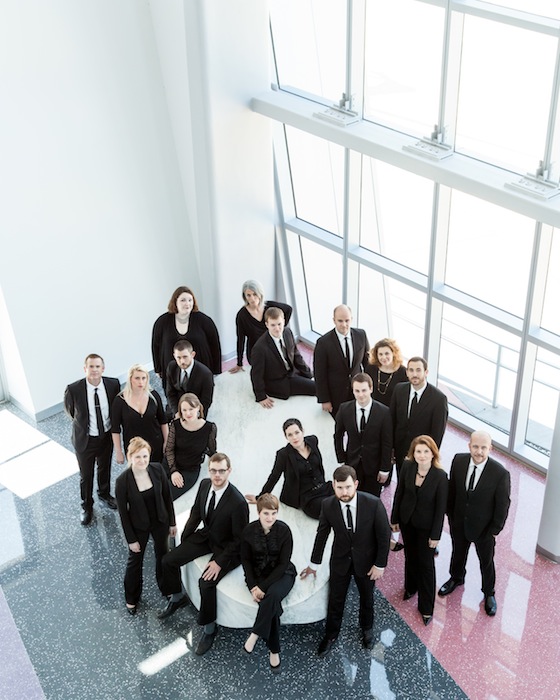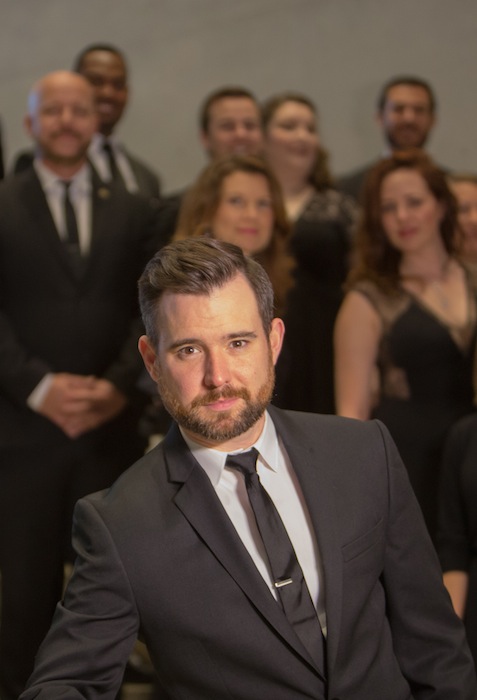Top Ten Performances of 2017
1. Florida Grand Opera: Verdi’s Un Ballo in Maschera.
Florida Grand Opera’s finest Verdi production in many seasons brought stellar vocalism, intense musical leadership by Ramon Tebar and a traditional but imaginative production in the original Swedish setting. Tamara Wilson’s creamy soprano, Rafael Davila’s robust tenor and Todd Thomas’ mellifluous baritone offered red-blooded Verdi singing with excellent contributions in supporting roles by Dana Beth Miller and Elena Galván. (LB)
2. Gaechinger Cantorey: Bach’s Mass in B minor.
The Choir and Orchestra of the Internationale Bachakademie Stuttgart concluded the Broward Center’s classical series in March with an inspirational performance of Bach’s final choral masterpiece. Under Hans-Christoph Rademann’s direction, the bright corporate sonority of the 31-voice choir and period-instrument orchestra could turn on a dime from light to darkness and the depths of human emotion. The soloists were all exceptional Baroque stylists. (LB)
3. Tenor Paul Appleby, horn player Josh Cote, New World Symphony members: Britten’s Serenade.
South Florida sees a parade of world-class pianists and violinists. World-class singers are rare visitors, however, so the tenor Paul Appleby’s recent performances here have been highlights.
In April he gave an atmospheric, exciting performance of Britten’s Serenade for Tenor, Horn and Strings, which was intense, intimate and–when he opened up to full Metropolitan Opera power–full of thrilling top notes. With Neil Cote’s horn playing–smooth, evocative and rugged, as the occasion required–Appleby brought to life this series of poems about the night, singing with particularly hair-raising force in an anonymous 15th century poem that describes Purgatory. (DF)
4. Osmo Vänska and the Minnesota Orchestra.
The unique chemistry between this top regional ensemble and its Finnish music director was vividly on display at the Arsht Center in January. Kalevi Aho’s Gejia, which fuses an aggressive modernist symphonic palette with ancient Chinese melodies, represented the conductor’s advocacy for contemporary Scandinavian composers. Haydnesque brio infused a light-on-its-feet traversal of Beethoven’s First Symphony, and a subtle reading of Sibelius’s Fifth Symphony resonated with an icy clarity that was devoid of bombast. (LB)
5. Palm Beach Opera: Verdi’s Rigoletto.
The vocal splendor and dramatic punch of Palm Beach Opera’s Rigoletto in March showed the magic that can happen on the rare occasions when things falls into place in a performance of a great opera. The baritone Michael Chioldi brought the court jester to life in all his twisted, self-loathing, passionate glory. The soprano Andrea Carroll gave a vocally dazzling, dreamily romantic performance as Gilda. The tenor Alexey Tatarintsev’s insolent, aristocratic virtuosity as the Duke of Mantua and the bass Stefan Kocan’s imposing Sparafucile rounded out a cast whose performance took place on sets of dark, crimson-shrouded opulence. (DF)
6. Franz Welser-Möst and the Cleveland Orchestra: Bruckner’s Symphony No. 7.
Franz Welser-Möst’s performances of the symphonies of Anton Bruckner have been widely acclaimed. After ten years of annual Miami residencies, Welser-Möst and the Clevelanders finally played one of these monumental works at the Arsht Center. The ensemble’s silky string textures and burnished depth of brass and wind sound illuminated a terrific performance of Bruckner’s Symphony No. 7. With masterly command of the score’s massive structure, Welser-Möst perfectly balanced lyricism, vigor and inexorable momentum. On the first half in excerpts from Bach cantatas, Seraphic Fire demonstrated tight and agile choral singing. (LB)
7. Osmo Vänska and the New World Symphony with Garrick Ohlsson: Sibelius and Grieg.
Osmo Vänska is one of the world’s finest Sibelius conductors. He scaled the peaks and valleys of his countryman’s Symphony No. 1 with a sure sense of drama and structural coherence and drew some of the New World Symphony’s finest playing of the year. Garrick Ohlsson, one of the most reliable soloists on the concert scene, freshly invigorated Grieg’s overplayed Piano Concerto in A minor with a performance both sensitive and poetic. (LB)
8. Stephane Denève and the Philadelphia Orchestra: Shostakovich’s Symphony No. 5.
It’s not easy to inject freshness into Shostakovich’s Fifth Symphony, one of the most frequently heard orchestral works in South Florida. But the Philadelphia Orchestra’s February performance at the Kravis Center in West Palm Beach reaffirmed the symphony’s stature as one of the most powerful orchestral works of the 20th century. Dramatic, icy, with moments of brutal violence and gentle compassion, the performance led by Stephane Denève gave the work the grand conception it deserved, assisted by the almost preternatural precision and virtuosity of the orchestra’s strings. (DF)
9. Seraphic Fire: Monteverdi’s Selva Morale et Spirituale.
To open the chamber choir’s 16th season, artistic director Patrick Quigley presented 70 minutes of excerpts from Monteverdi’s sacred scores written for the Basilica of San Marco in Venice. The felicitous melodies of these works would not have been out of place in Monteverdi’s operas. Quigley’s direction encompassed the music’s reverence and drama and there were particularly outstanding solo contributions from soprano Margot Rood, mezzo Amanda Crider and countertenor Douglas Dodson. (LB)
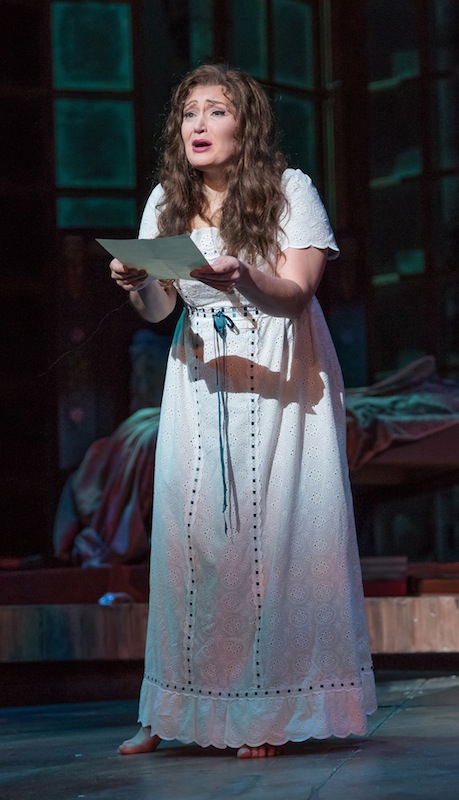
Dina Kuznetsova stars as Tanya in Florida Grand Opera’s production of Tchaikovsky’s “Eugene Onegin.” Photo: Chris Kakol
10. Florida Grand Opera: Tchaikovsky’s Eugene Onegin.
FGO’s January production of Tchaikovsky’s greatest opera was staged by Jeffrey Marc Buchman in an intimate manner that emphasized the protagonists’ inner turmoil. The score’s surging drama and the lightness and charm of the ballet and choral scenes was passionately conveyed under conductor Alexander Polianichko, a veteran of the Mariinsky and Bolshoi. Heading a uniformly excellent cast, Dina Kuznetsova was a charismatic Tatyana with a gleaming lyric soprano. (LB)
Honorable Mentions
Roberto Abbado’s fiery performance of Berlioz’s Symphonie Fantastique and Mark Wigglesworth’s eloquent Elgar First Symphony, both with the New World Symphony; Seraphic Fire’s Bach Motets and Christmas program; the Ehnes Quartet’s patrician Beethoven; Joseph Kalichstein’s passionate Schumann and Dvorak piano quintets with the Borodin Quartet at Friends of Chamber Music; Misha Namirovsky’s big-boned Beethoven and Scriabin sonatas at the Miami International Piano Festival; Festival Miami’s 80th birthday tribute to Steve Reich; Nu-Deco Ensemble’s Global Cuba Fest concert; Zubin Mehta and the Israel Philharmonic in Mozart and Schubert symphonies; Pavel Kogan and the Moscow State Symphony’s revival of Scriabin’s Symphony No. 2; Alisa Weilerstein’s riveting performance of Britten’s Cello Symphony with Michael Tilson Thomas and the New World Symphony (LB)
Christian Tetzlaff’s unusually fiery interpretation of the Mendelssohn Violin Concerto with the New World Symphony; Nikolaj Znaider’s committed performance of the neglected (if not quite unjustly) Nielsen Violin Concerto; Lang Lang’s nuanced, sensitive and–needless to say–bravura account of the Liszt B Minor Sonata; a fascinating, multi-century evening of Russian choral music by Seraphic Fire, conducted by Elena Sharkova; Miami Music Festival’s gripping production of the opera Dead Man Walking by Jake Heggie and Terrence McNally; conductor James Conlon’s decision to program Shostakovich’s neglected Symphony No. 12, proving that this brilliant symphonic showpiece is much more than a piece of Soviet propaganda; Palm Beach Opera’s affecting, subtly characterized performance of Puccini’s Madama Butterfly. (DF)
In his recital for Friends of Chamber Music, Stephen Hough showed an ability to transcend definitions of dynamics and provide an enveloping palette of soft sonorities, offering a new dimension to Debussy’s music. And Josu de Solaun displayed qualities that distinguish him as a brilliant and sophisticated musician in a recital for the Miami International Piano Festival. (Inesa Gegprifti)
Dishonorable Mentions
Nicola Benedetti for one of the worst concerto performances in recent memory in a shaky, disengaged account of the Brahms Violin Concerto with the Royal Scottish Orchestra; the pianist Kirill Gerstein for a butterfingered, error-riddled performance of Liszt’s Transcendental Études. (DF)
Michael Hendrick’s worn, effortful tenor in an otherwise admirable performance of Marvin David Levy’s Atonement by Orchestra Miami; ragged and out-of tune orchestral playing and tenor Fabian Robles’ nonexistent top register foiled Miami Lyric Opera’s production of Rossini’s Barber of Seville. (LB)
Best New Works
Carson Kievman’s opera Tesla, produced by SoBe Arts, was a sweeping, musically eclectic historical drama; Ellen Taaffe Zwilich’s Pas de Trois, played by the Kalichstein-Laredo-Robinson Trio at Friends of Chamber Music, mixed the blues and raw energy to stylish effect; Richard Moriarty’s Civil War song cycle We That Wait (sung with dramatic conviction by mezzo Robynne Redmon with Thomas Sleeper and the Frost Symphony Orchestra) mined austere lyricism and jarring dissonance in dramatic fashion; Nu Deco Ensemble’s reading of Daniel Wohl’s misty Replicate channeled “Debussy in the rainforest” through skillful layering of live and electronic textures. (LB)
The lush, sensual, very French tone poem Celephaïs by composer Guillaume Connesson, performed by the Orchestre National de Lyon conducted by Leonard Slatkin; Der nächtliche Wanderer (The Night Wanderer) by Dutch composer Reinbert de Leeuw, a compelling, unearthly and theatrical work of musical narrative performed by the New World Symphony under the composer’s direction. (DF)
Most Worthy Revival
On Holocaust Remembrance Day in March, Elaine Rinaldi and Orchestra Miami presented Marvin David Levy’s oratorio Atonement. The work of a composer with a distinctive, darkly lyrical voice, the score is both fiercely astringent and deeply moving. Despite a weak tenor soloist, Rinaldi led a well-prepared, committed reading with excellent choral and orchestral performances. Soprano Elizabeth Caballero was the stunning soloist in the central cantata Canto de los Maranos. (LB)
Most Interesting New Artist
In a recital that concluded the Friends of Chamber Music season in May, violinist Esther Yoo demonstrated impeccable technique and highly personal interpretive instincts. Now in her 20s (after becoming the youngest ever winner of the Sibelius Competition at age 16), Yoo was particularly impressive in infrequently programmed sonatas by Mendelssohn and Debussy. (LB)
Most Improved Organization
After weathering several unstable seasons with a revolving door of conductors, the Master Chorale of South Florida opened its 15th anniversary season in November with a superb performance of Maurice Duruflé’s Requiem. Now in his fifth season as artistic director, Brett Karlin has transformed the chorus into a highly cohesive performing unit with the voices well balanced and strong throughout all sections. (LB)
Whither the Cleveland Orchestra’s Miami Residency?
The Cleveland Orchestra’s press representative denied that any changes were in the offing for the Cleveland-Miami relationship. Then the orchestra announced that the 2018 Arsht Center residency would be reduced to just two weeks without giving any explanation to the Miami supporters or audience. More recently the orchestra revealed an accumulated 4.2 million dollar deficit and blamed loss of Miami patrons as part of the reason. 2018 will likely be the final year for the Cleveland Orchestra’s Miami residency–if they actually admit it. (LB)
Distinguished Achievement Award: Patrick Quigley
Patrick Dupré Quigley came to Miami from New Orleans via Yale to lead musical activities at a large Catholic church in South Miami. Soon he formed a professional choral ensemble and Seraphic Fire was born.
Quigley is a superb choral director and multi-talented pianist, organist, vocalist and composer. He has consistently drawn a luminous sonority and precision performances from his singers. Over the past fifteen years, Seraphic Fire’s eclectic repertoire has encompassed the choral masterpieces of Bach and Renaissance and Baroque scores large and small as well as much contemporary choral music, including numerous commissions.
Quigley’s achievement with Seraphic Fire has spread well beyond the group’s local performances. With concerts throughout South Florida, touring to major American cities and Mexico, and two Grammy nominations, the group’s success has contributed enormously to Miami’s artistic prestige. (LB)
Posted in Articles
Leave a Comment
Tue Dec 19, 2017
at 3:27 pm
No Comments
